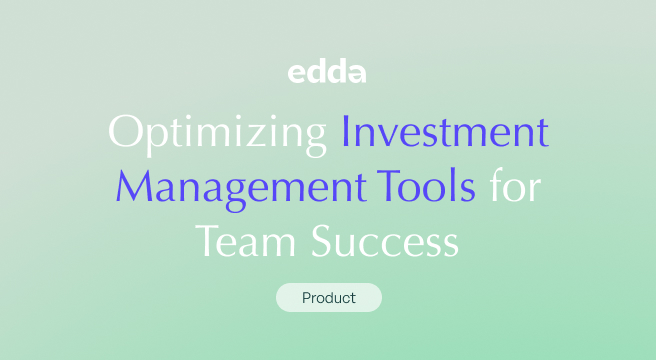In the sophisticated arena of investment management, where teams mirror the complexity of their portfolios, the synergy between personnel and their technological tools is imperative.
Neglecting this crucial alignment can lead to operational discord, permeating all aspects of your firm’s activities, from nuanced data analysis to nuanced client interactions. Recognizing and rectifying this mismatch is fundamental to maintaining the high standards of operation and efficiency expected in the industry.
The Real Cost of Ignoring Individual Needs in Teams
When your analysts contend with outdated data analysis capabilities within their venture capital portfolio management tool, their capacity to deliver prompt and accurate market insights is significantly hindered.
This delay in providing key information can result in missed opportunities, as your firm is unable to respond swiftly to market trends or capitalize on emergent investment prospects. The consequence is not just a momentary setback but can manifest as a long-term impact on your firm’s reputation for agility and foresight in investment strategy.
Portfolio managers lacking efficient tools face their own set of challenges. Their inability to detect and react to crucial market movements can lead to investment choices that not only underperform but also expose the firm to higher financial risks.
This inefficiency in portfolio management can cascade into broader implications, affecting investor confidence and potentially leading to a withdrawal of investments, which is detrimental to the firm’s asset base and growth trajectory.
Similarly, the impact of client relationship managers operating with inadequate CRM relationship intelligence capabilities extends beyond individual client interactions.
Substandard client engagement and service can result in client dissatisfaction and attrition, eroding the firm’s client base and reputation. This, in turn, can have a domino effect, making it challenging to attract new clients and retain existing ones.
When your investment tools don’t play well together, it can stifle the lifeblood of your firm – collaboration. Information silos can form, leading to misaligned strategies and disjointed decision-making. The result is a strategy out of sync with the market, potentially placing your firm at a disadvantage.
Strategies for Tech Stack Optimization
The cumulative effect of these inefficiencies can be a profound erosion of your firm’s competitive edge, affecting market standing and financial performance. To prevent this, adopting a strategic approach is necessary to ensure that all teams within your investment firm are equipped with the right tools for success.
This involves a deep dive into understanding the unique requirements of each team and tailoring your technology stack to meet these needs effectively.
How can you accomplish this?
Tailored Technological Empowerment
To effectively empower each team within an investment firm, conducting a detailed and ongoing assessment of their specific technological requirements is a must. This process involves several key steps:
1. Establish Regular Engagement Channels
Create structured forums such as monthly meetings or dedicated feedback sessions where analysts, portfolio managers, and client relationship teams can voice their technology needs and challenges.
Implement an open-door policy for technology-related suggestions, encouraging team members to share their ideas and feedback at any time.
2. Conduct Detailed Task Analysis
This analysis should aim to identify any disconnects between current technology capabilities and the actual needs of your teams. Where analysts might require advanced predictive analytics tools, your client relationship managers might benefit more from a CRM system with deep relationship intelligence capabilities.
Work with each team to map out their day-to-day tasks and identify where current technology falls short. This could involve shadowing team members, conducting workflow audits, or using time-tracking tools to gain a deeper understanding of their processes. Analyze the types of data each team works with, the frequency of their tasks, and the speed and accuracy required to complete them. This helps in pinpointing the exact features needed in their technological tools.
3. Identify Challenges with Current Systems
Facilitate sessions where teams can discuss the limitations of existing systems. Encourage them to detail how these limitations affect their productivity and the quality of their work. Pay special attention to recurring issues across different teams, as these might indicate systemic problems that require comprehensive solutions.
4. Gather Requirements for New Features
Ask teams to specify features that would enhance their efficiency. Encourage them to think both about immediate needs and potential future requirements. Consider using technology wish-lists or suggestion boxes where team members can propose new tools or features they believe would aid in their tasks.
5. Prioritize & Implement Technology Upgrades
Based on the collected data, prioritize technology upgrades that will have the most significant impact on efficiency and effectiveness. Develop a phased implementation plan that addresses the most critical needs first while planning for future upgrades. Then, ensure that new technology integrations are compatible with existing systems to maintain a seamless workflow.
6. Conduct Ongoing Review and Adaptation
Regularly revisit the technology needs of each team to ensure the tools remain aligned with their evolving tasks and responsibilities. Stay adaptable and open to making adjustments as teams grow and market dynamics change.
Enhancing Collaboration and Integration
In the investment management industry, where decisions are often interdependent, the integration venture capital software tools across teams is essential. A portfolio manager’s decision is enriched by insights from analysts, and this in turn impacts client relations. Implementing technology that facilitates seamless communication and data sharing across these teams is imperative. This not only enhances collaboration but also ensures that critical information is readily available, leading to more informed decision-making.
Regular Training and Adaptation
Equipping your teams with cutting-edge tools is just the first step. Regular training sessions are vital to ensure that all team members can fully leverage these tools. Additionally, as the market evolves and new technologies emerge, your firm should be ready to adapt and upgrade its tools accordingly. This proactive approach to training and adaptation prevents your firm from falling behind in a rapidly evolving industry.
Securing Client Trust through Advanced CRM
For client-facing teams, the importance of a robust CRM system cannot be overstated. A venture capital CRM that offers detailed insights into client preferences and behaviors can transform the way your client relationship managers interact with clients. Investing in a CRM that integrates relationship intelligence not only streamlines client management but also offers a personalized experience to your clients, bolstering their trust and satisfaction.
Edda: Revolutionizing Investment Management with Advanced Technology
Edda’s, one of the best CRM for venture capital, offers a sophisticated investor CRM software suite that is a crucial ally in overcoming the challenges faced by investment firms. Its capabilities in deal flow venture capital management, portfolio oversight, and investor relations make it an invaluable asset for enhancing team productivity and decision-making.
- Deal Flow Management: Edda’s dealflow CRM streamlines the process of managing and tracking deals from origination to closure, providing analysts and portfolio managers with real-time insights into market trends and investment opportunities. This feature is pivotal in ensuring your firm’s ability to respond swiftly to market changes.
- Advanced Portfolio Management Tools: For portfolio managers, Edda offers dynamic tools that facilitate informed decision-making. These tools provide a comprehensive view of the portfolio, enabling managers to efficiently assess risks, track performance, and adapt strategies to market movements.
- Innovative CRM for Client Relationships: Edda’s CRM system stands out with its deep relationship intelligence capabilities, allowing client relationship teams to offer personalized and effective services. It enhances client engagement and retention, which is vital for maintaining your firm’s reputation and client base.
- Integration and Collaboration: Edda’s platform is designed to ensure seamless integration across various functionalities. This integration is essential in fostering efficient collaboration between analysts, portfolio managers, and client relationship teams, ensuring that critical information is shared and leveraged for optimal decision-making.
- Customization and Scalability: Recognizing that each investment firm has unique needs, Edda’s software is customizable and scalable. It adapts to your firm’s specific requirements and grows alongside your business, making it a future-proof choice for your technological infrastructure.
By incorporating Edda into your tech stack, your firm is not just adopting a software solution; it’s embracing a comprehensive approach to optimizing investment management tools. Edda’s platform ensures that each team within your firm is empowered with the right tools, aligning with the overall goal of driving success and maintaining a competitive edge in the investment industry.









